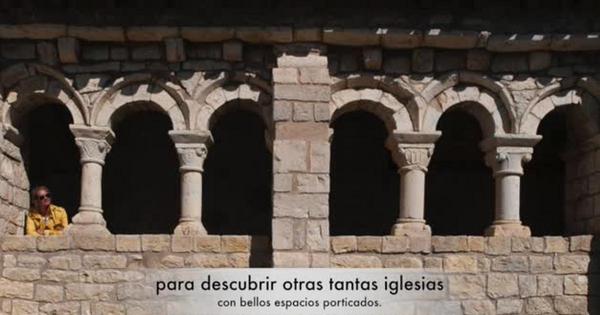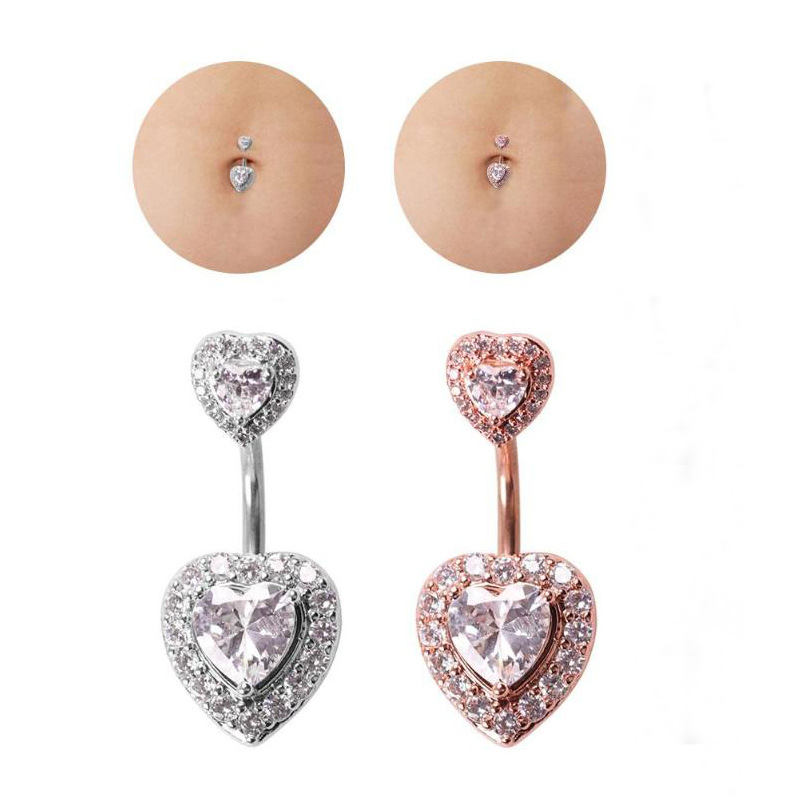arcaded churches. Route through three jewels of medieval art near Pamplona
Tourism
Astigmatism: What it is and How to cure. #EyeHealth #Astigmatismhttps://t.co/TmnDcc9vmp https://t.co/kJUIsNHw3t
— Healthcare4Mobi Fri Mar 11 18:01:45 +0000 2016
The Church of the Purification of Our Lady of Gazólaz, San Esteban de Eusa and San Vicente de Larumbe are three beautiful examples of porticoed churches that, moreover, are located a few kilometers from the capital
Updated on 01/22/2021 at 13:09 The Romanesque art of Navarra is a gift for the senses. During the visit to these medieval monuments, our hands will caress the stone patiently worked by the stonemasons. Our eyes will admire those figures loaded with symbolism that adorn the tympanums and capitals. Our ears will hear the sound of the bell that is lost in the mountains. But above all, with a little imagination and sensitivity, we can travel to a remote time, where the world was not rational like it is now, where values were different. A universe in which hell and the forces of evil existed and were so real for the people of the 12th century that they marked their existence. In the rich panorama of the Romanesque of Navarre we find many surprises. Perhaps one of the most interesting are the porticoed churches. The portico is a covered and colonnaded place that is built in front of temples or other buildings of special significance. The medieval arcaded churches of Navarre are influenced by the Castilian Romanesque, where this type of temple originated, creating a unique space not without mystery. The porticoes were spaces of transition from the mundane to the sacred. Enclosures where a certain spiritual current is still breathed that, without a doubt, was felt by those who approached them more than 700 years ago. They were multifunctional places. In them, anything from an exorcism to a meeting of friends could take place, from the trial of a prisoner to the burial of a great lord. And it is that the Romanesque porch was a place of importance for the community. In some way, this condition of “almost sacred” space that the proximity to the church gave it meant that the activities that took place in it were under divine supervision. Thus, the trials held in the portico would be fair, the possessed cured, the game chaste and the buried lord would rest in peace. In Navarra we are lucky to have several magnificent examples of porticoed churches. The three most interesting are: the Church of the Purification of Our Lady of Gazólaz, San Esteban de Eusa and San Vicente de Larumbe. All three have been declared Assets of Cultural Interest. The first two are Romanesque. The third is already framed in the Gothic, although with many debts with the previous style. All three are very close to Pamplona and can be visited in a single day. Not even bad winter weather should deprive us of approaching to contemplate them. Sheltered from the rain and the wind, in its porticoes we will think that we have moved to another era. And, if we listen well, perhaps we will hear the messages that the sculptures that adorn them want to convey to us. GAZÓLAZ. CHURCH OF THE PURIFICATION OF NUESTRA SEÑORA We will start our tour approaching the Church of the Purification of Gazólaz. This town is very close to Pamplona, just 6.5 km from the Navarran capital. From the A-12 motorway, passing through Zizur Mayor, we take the NA-7015 road that will take us to the town. In the center of the village, next to the square, stands the church. Since ancient times, the artistic importance of this small temple was taken into account, declared a National Monument in 1931. It is one of the best examples of rural Romanesque in Navarra. The church was built between the end of the 12th century and the first half of the 12th century. XIII. The Romanesque was gradually giving way to the Gothic. In the church of Gazólaz we fully appreciate this moment of transition. While the ribbed ribbed vaults of the portico already show the typical pointing of the Gothic, the entrance door to the temple, as well as the sculptures that are distributed on the capitals of the portico, are still anchored in the Romanesque. The Gazólaz portico is the most interesting of all Navarre. Its four large semicircular arches, decorated with sculpted scenes, will illustrate the beauty and symbolism of rural Romanesque. The sculptural catalog that we will find is the main value of the monument. They are rustic sculptures that remind us of naive art. They transmit the charm of the simple, of the old. They are very representative of the rural in the Middle Ages. The ingenuity of Gazólaz's sculpture surely reached the people who came to the temple with its message and that, back in the 12th century, the vast majority were illiterate. We can divide the sculptures into three groups: plant motifs, monsters and religious scenes. These last two groups are the ones that attract the most attention. In Romanesque art, monsters generally represent evil, sins, perdition and the punishment of the sinner. In the Gazólaz portico we can see two griffins, a centaur and a harpy. A curious winged bull that preserves part of the original polychromy stands out. Although this bull probably does not represent a monster but Saint Luke, one of the evangelists in his symbolic representation. Thus, on the same capital we find an eagle and an angel, symbolic representations of Saint John and Saint Matthew, two other evangelists. Regarding the eagle, a very suggestive theory is the one that sees in it a representation of the arrano beltza or black eagle which was the emblem of King Sancho VII the Strong. The porch was made during his reign. Among the religious scenes we can see the kiss of Judas, the stoning of Saint Stephen and the entry of Jesus into Jerusalem. This last scene is the most interesting. We see Christ waving as he enters Jerusalem riding a donkey followed by his lovely colt. Two angels flank the scene while pointing to Christ to highlight the divinity of a man who, despite his majesty, does not use a luxurious mount. The little heads that appear on the city wall are very curious. There is a strange detail in this scene. It seems that the face of Christ and the angels are scratched. Who and when could perpetrate the aggression? It is one of the mysteries of the Gazólaz church. The porch holds other secrets. Some of the capitals have been half hidden by the pillars that reinforce the outside of the portico. Let's take a good look. We will find one of the iconographies that best represents the fight of good against evil: Saint Michael spearing the dragon. The cross that adorns his shield is in the center of the composition. The dragon is wounded in the mouth full of terrible teeth by the archangel's spear. Good defeats evil. The sculptural work of the entrance gate to the temple is much more perfect. We appreciate the hand of another more experienced sculptor. The capitals have well-made plant and geometric motifs, but what is most striking are the corbels. They represent a bull and a lion. The lion devours two human beings, of whom only the legs stick out from the terrible jaws. A Trinitarian Chrism adorns the tympanum indicating that this door marks the entrance to the sacred place that is the temple, the house of God. It is the portal that separates the earthly from the spiritual, the sinful from the divine. The bull and the man-eating lion are the guardians of the sacred portal. We will leave Gazólaz and its beautiful church with balanced volumes to head north of Pamplona, to the Ezkabarte valley. Another of Navarra's porticoed churches awaits us in Eusa. CHURCH OF SAN ESTEBAN DE EUSA The church of San Esteban de Eusa is located just 9 kilometers from Pamplona but, despite its proximity and its artistic interest, it is not well known and it is off the usual tourist circuits. It is a little hidden gem that surprises when discovered. The Church of San Esteban de Eusa is the best example of Romanesque in the Ezkabarte valley. It has been declared an Asset of Cultural Interest since 1983 and was built at the end of the 12th century. It is located at the top of the town. One of the attractions of the visit are the excellent panoramic views that can be enjoyed from the small Romanesque temple. The straight head of the temple is curious, very simple. The usual thing in the temples of this time are the heads in apse as we can see in Gazólaz. The temple has the orientation of the head to the east, towards the rising sun, typical of Christian temples. The bell-tower also attracts attention, since it rises above the central nave of the church. But, as in Gazólaz, what is most surprising is the beautiful portico, which is accessed through two doors, both crowned by the chrismon Trinitarian, which symbolizes the Holy Trinity: Father, Son and Holy Spirit. Another chrismon crowns the entrance door to the temple. The fact that the church has three Chrismons is one of the characteristics that increases its originality and interest. The three are very different, which determines that they were made by different artists. The capitals of the small columns that support the arches of the portico are adorned with small heads and undulating lines. One of the capitals decorated with two crosses and two circles, one representing the sun and the other the moon, is striking. It is common to see the sun and the moon related to the crucified in the artistic representations of the Romanesque. Nor does the distribution of motifs seem casual. The two crosses are on the east and south faces of the column, the most illuminated. On the other hand, the moon, the night, appears towards the interior of the portico, the least illuminated part. The sun to the west, towards sunset. The east (dawn, the beginning of everything) is occupied by the cross. In this way, the arches of the portico are divided into two sets, each with two columns. In the group on the right, the decoration of little heads alludes to the earthly, to man. In the set on the left, the crosses, the sun and the moon symbolize the celestial, the spiritual. On the west side of the portico there is still a tombstone decorated with a sword. It is an example of the funerary use that these porticoes had. But, on the other hand, we can see some game boards engraved in the stone next to the columns of the portico. You have to think that these game boards were used for countrymen to pass the time innocently while enjoying the good views from the church, which is still a rarity. Today no one would go to play Parcheesi in a church or a cemetery. But surely what will attract our attention the most are the sculpted corbels that are found over the main door of the porch and the sculpted capital that is to the left of the entrance to the temple. They do not stand out for the quality of the sculpture, but one of the corbels has one of the most interesting and suggestive scenes that we can see in Navarra. Two naked men appear in the scene. One grabs the other by the neck. The caught opens his mouth and sticks his tongue out for air. An assault? A chokehold? Let's take a closer look. Both characters have their right hand on their sex. On the right, in the background, a third character represented only by his head. How to interpret this scene? Most likely, the corbel has a sexual significance. Sculpture with sexual symbology, as a criticism of lust, is quite common in Romanesque art. The fact that the two men touch their sexes may allude to masturbation. But what about drowning? Perhaps we are facing the representation of a masochistic scene and the corbel is a criticism of this sexual practice, which was not viewed favorably by medieval society. And the small head that completes the corbel in the background? It seems that he watches from a distance. A voyeur? a voyeur? In the corbel we see the interpretation of sex as sin. Interpretation far removed from the much more natural one we have today. This criticism of sexuality is common in the symbolic message of the Romanesque. What is not so common is the representation of such imaginative sexual practices. Furthermore, to complete the mystery of the sculptures in the church of Eusa, inside the porch, on the capital on the left of the access portal to the church, we have another curious representation. Here a woman appears, dressed in a chaste dress and a long skirt, and a man, naked and with well-marked sexual attributes. In the middle, a face of another character. What does this scene represent? Surely it is a rustic representation of Adam and Eve. But the third character and the fact that the woman is dressed can lead to another interpretation. Man and woman are separated by the head that looks forward, towards the viewer of the relief. This capital could be the counterpoint of the corbel outside the portico. While in the last one the "bad sexuality" was criticized, in this case we would be seeing the union man-woman authorized by the Church. Thus, the central character would represent a priest, a religious, probably a bishop. He wears a headdress that as such could identify him. The symbolism of the capital would be the following: the union of man and woman must be supervised by the church (the sacrament of marriage). This is the correct and permitted sexuality. The fact that the woman is dressed and the man naked could refer to the need, within the canons of the Middle Ages, for women to retain chastity until marriage, a condition not required in the case of men. character that we have identified as religious looks at everyone who enters the church. It is as if he wanted to convey this message to the parishioners who come to the temple. The size of the head is superior to that of the other characters. That creates a feeling of hierarchical superiority. Nothing unusual in this medieval society where the religious set the guidelines for coexistence and permeated all facets of life. All these messages conveyed by the Romanesque sculpture of Saint Stephen of Eusa can only be read by abstracting from our time and approaching the monument from the perspective from the time it was built. It is another of the charms of the Romanesque. It presents us with a game of symbolic interpretation that makes us participate in the artistic experience. CHURCH OF SAN VICENTE DE LARUMBEAfter delving into the strict sexuality of the Middle Ages through the messages of the sculpture of the Church of Eusa, we return to Pamplona. We take the northern roundabout and take the road that leads to Irurtzun and, before reaching this town, we will turn right to approach the town of Larumbe, which is 20 kilometers from Pamplona, in the Gulina valley. At the top of the town, the church of San Vicente awaits us. Of the three churches, it is the least known on this route through the art of the Navarrese Middle Ages. The arches of the portico of San Vicente already indicate that we have advanced in time. They are fully Gothic and of great beauty. Instead, his rustic sculpture breathes Romanesque through all its pores. It is in this church that the most pronounced contrast between Romanesque and Gothic occurs. It is, of the three churches, where the transition that the 13th century entailed when it comes to understanding architecture is best appreciated. From the architectural point of view, San Vicente de Larumbe has the most interesting and beautiful portico, with ogival double windows and thin columns that visually lighten the heaviness of the walls. But, compared to the elegance of the Gothic, we find a rustic statuary where the Romanesque fully survives. Contrasting with the more advanced architecture of the three churches visited, we find here what is perhaps the most primitive Romanesque, executed by the least skilled artist. This imperfection in the carving is more than compensated with an expressive force that will surely captivate the visitor. For example, what can we say about the horrible monsters on the corbels where the arches of the cloister rest? Some seem to threaten us with powerful jaws full of sharp teeth. Others play hellish horns. It is one of the recurring messages of Romanesque symbolism: evil threatens, the evil one and his demons are ready to punish sinners. And to free us from condemnation, the sculpture on the porch of Saint Vincent also offers us the solution. Thus, many of the capitals narrate scenes from the Bible, including the crucifixion, the saving sacrifice according to Christian theology. The characters in these scenes are highly archaic, but at the same time extremely lively. One of the most curious capitals is the one that represents the Virgin with the Child on her lap. A disproportionate Child Jesus blesses the observer with his right hand. Next to him, a star (the star that marked the portal of Bethlehem to the Magi?). But perhaps, what surprises us most is the Virgin. The shape of her head is reminiscent of the unsettling character in the famous painting “The Scream” by Edvard Much. Other curious scenes and characters are waiting to be discovered by the attentive gaze. For example, a "green-man" or vegetable man, a motif more typical of the Gothic. It is usually interpreted as the representation of nature. Also very curious are the Three Wise Men shown with great ingenuity in one of the capitals of the windows. In the portico we find animals of great symbolic importance: an eagle, a lion and a mystic lamb in one of the keys. We will also find a quite exceptional crismón. First for its location. It is located at the entrance to the portico, but not centered on the top of it, but on one of the sides, near and below an angel. But the most interesting thing is that the cross, an element of great significance in the crismón since it alludes to Christ, has been replaced by a small cross. In the corbels, a contortionist executes his pirouette and another man masturbates. Animals and monsters complete the list of sin contrasting with figures of angels that are distributed on the capitals of the porch. Also in the portico we see a snake, a representation of evil, and near it Saint Michael, the captain of the heavenly troops, nightmare of the demons and champion against the evil one. Here, San Miguel appears weighing the souls of the deceased. If sins outweigh kind deeds, the soul will suffer eternal damnation. If not, wait for Paradise. Thus, little by little, from surprise to surprise, we discover in the portico of San Vicente the spiritual struggle that is represented here. In the face of all this chaos of demons, there remains the hope of salvation for the believer. And the one who facilitates it is Christ with his sacrifice. This is what one of the capitals seems to tell us where we see Christ crucified and, near him, we see two apostles. One of them is San Pedro, identified because he carries a huge key. They are the keys to heaven. Next to San Pedro, a small door. It is the access to paradise, it is the door that the keys of this saint will open to whoever deserves it after having kept away from sin and temptations. It is the symbolism of strong theological load of Romanesque art that does not stop admiring the observer for the attractive way in which it is represented. After this immersion in the Middle Ages, we can finish the excursion enjoying the beautiful panoramic views that can be enjoyed from the church of San Vincent de Larumbe. The fields and mountains are offered to the gaze framed by the beautiful Gothic windows. Out there is the real world. But it may be that, looking at the Romanesque sculpture of the portico, we imagine that there is an invisible world as well. A world of monsters and angels. A hidden world in eternal struggle. The world in which those who lived here more than seven centuries ago believed. THE ROMANESQUE IN NAVARRANavarra is rich in Romanesque art. The temples scattered throughout its geography will delight any fan of this art. The three churches discussed in this article are just a sample of the wealth of heritage that awaits the visitor to discover. The monasteries of Leire, Santa María de Sangüesa, San Miguel de Estella, San Martín de Artáiz, the church of La Magdalena de Tudela, etc., are only a small part of the long list of Romanesque churches scattered throughout Navarre. FUNCTIONALITY OF THE PORTICOSBango Torviso, in his study “Atrium and portico in the Spanish Romanesque”, gives several functionalities to these porticoes: LABELS CommentsWe recommend that before commenting, you read the rules of participation of Diario de Navarra
CLOSE SEE CAPTION PHOTO







![47 best antiage nutritive cream in 2022 [based on 326 reviews] 47 best antiage nutritive cream in 2022 [based on 326 reviews]](https://website-google-hk.oss-cn-hongkong.aliyuncs.com/drawing/article_results_6/2022/2/27/1918fc37c66ad30564173e69d9df88a0.jpeg)
